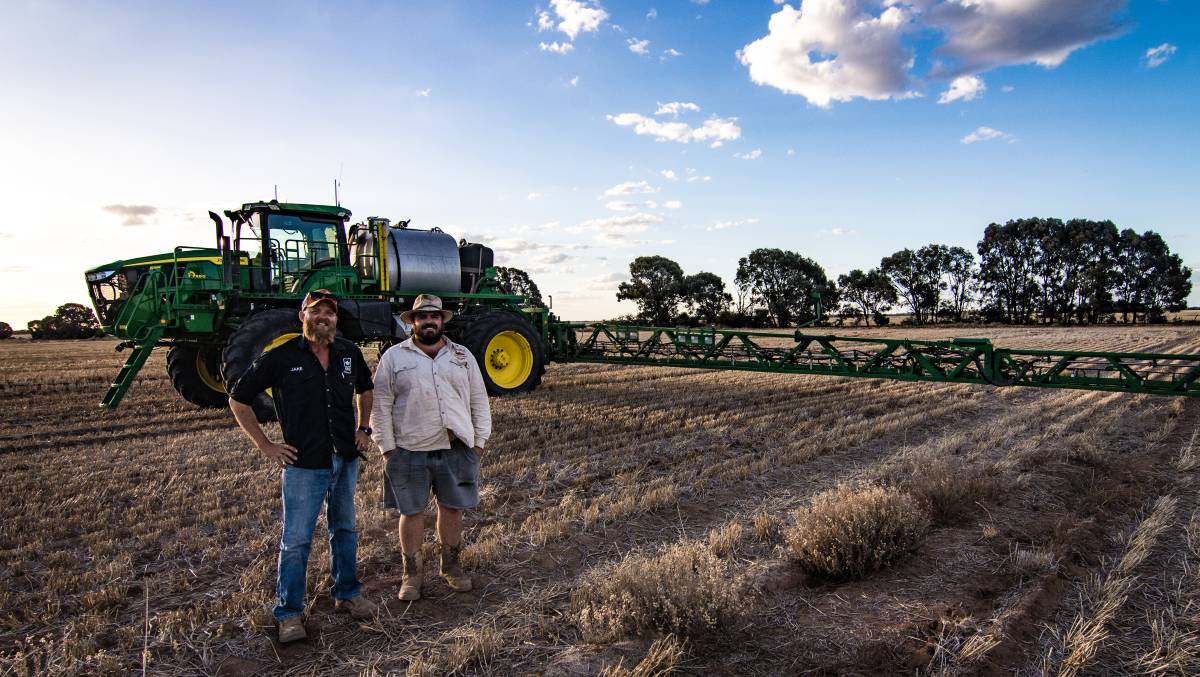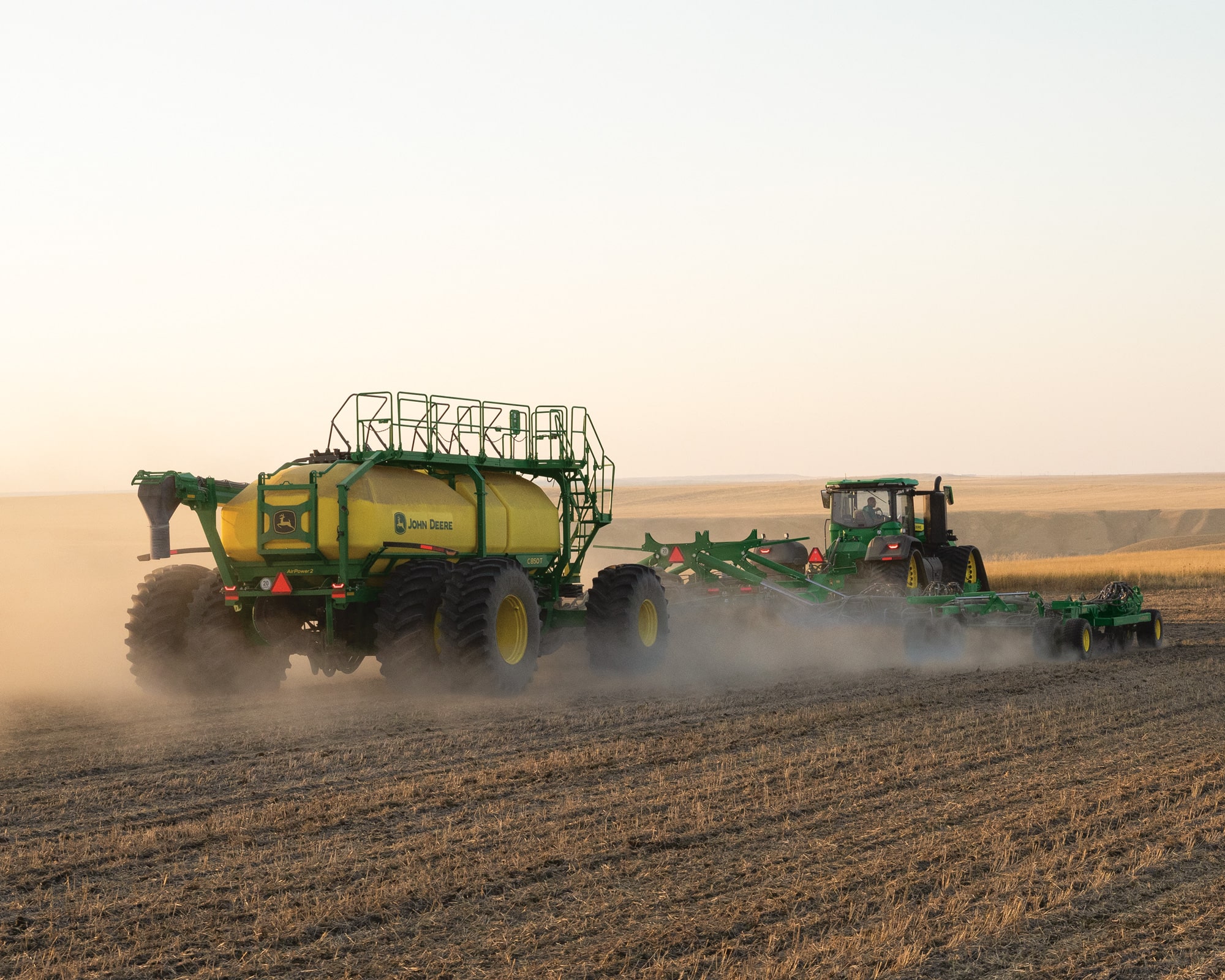Spot spraying technology has long been hailed for its ability to reduce chemical inputs but it can also play a role alongside education in mitigating spray drift.
Queensland farmer Jake Hamilton runs John Deere See & Spray Select fitted to a 616R self-propelled sprayer and said the technology is brilliant.
Mr Hamilton is a director of family business, Krui Pastoral, which farms roughly 5000 hectares of country 50 kilometres west of Condamine.
“It is absolutely fantastic; when we are spraying fallow now we just leave it on, we use the cameras all the time,” he said.
“It’s a very comfy machine to sit in, that’s for sure.
“The benefit you get with this system over the current systems available is the cameras are actually facing forward rather than straight down; I think it gives them more time to detect weeds as they are coming or passing by because we haven’t seen any misses with it really.”
The Krui Pastoral team have just harvested a “fairly handy” wheat and barley crop and will look to spray out the sorghum crop in the next week or two.
Mr Hamilton said the sorghum was planted into very wet melonhole country and had a few gaps in it but was looking okay overall.
He said the main reason they planted sorghum was to dry out the paddock, which they plan to level as soon as the crop is harvested.
The See & Spray Select system was a purchasing decision years in the making for Mr Hamilton.
He heard about John Deere acquiring Blue River Technology in 2017, a start-up that was using cameras and machine learning to identify and spray weeds.
Mr Hamilton knew the technology would be in the pipeline for John Deere and “started hounding our dealer straight away”.
“John Deere took two demonstrator models to Australia and I made sure we got our name on one of them,” he said.
The sprayer arrived in the middle of 2022 but Mr Hamilton said they haven’t had an opportunity to use the cameras until recently.
Over the past two weeks the machine has been used to “tidy up wheat and barley volunteers” and to spray fleabane.
“We are using it to spray a heavy rate of Paraquat on fleabane because we don’t want to be using 2,4-D on fleabane with our neighbours growing cotton,” Mr Hamilton said.
“Because we are using the cameras we can put on a heavy rate of Paraquat, which wouldn’t be feasible as a broadacre application.”
Mr Hamilton said it is very early on in the season at Condamine but last year there were some significant drift events in the district.
When it comes to spraying, Mr Hamilton said there are three things farmers need to remember.
“It’s very simple; it’s the right product, the right nozzle and the right conditions,” he said.
Richard Weston is the Vnet Precision Ag crop care business development specialist for John Deere dealer, RDO Equipment.
He said See & Spray Select is available on John Deere’s 400 and 600 series self-propelled sprayers, however machines for 2023 have already sold out. Orders for 2024 machines will open mid-year.
“The driver for spot spraying has been and is the reduction in the use of chemicals, giving advantages both financially and environmentally, by using less chemical the chances of a drift event are reduced,” Mr Weston said.
“Growers can also use high value chemicals that could not be economically used if they were blanket spraying, the higher value chemicals use chemistry that are a way of beating chemical resistant weeds.”
Pursehouse Rural agronomist Patrick Jones is working with growers who are using Weed-It spot spraying technology.
“Education is the key process and is a learning curve for growers to accurately use this technology to get the best results from it,” Mr Jones said.
“It’s a great tool for using lesser amounts of product in the environment, if there’s less product in the environment it should reduce the risk of drift.”
Mr Jones services the Melrose, Clifton and Allora districts on the Darling Downs and has been a private consultant in the Gwydir and Macintyre valleys since 1987.
He said education remains a crucial factor for growers, spray contractors and agronomists.
“We need education in spray equipment, spray nozzles, droplets and droplet size, combined with an understanding of weather conditions and what effects it has on those droplets when being applied,” Mr Jones said.
“Even with all the best practices, nobody is infallible.”
Written by Melody Labinsky, Queensland Country Life

 MyDealer:
MyDealer:


